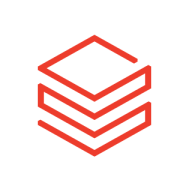

Find out in this report how the two Cloud Data Warehouse solutions compare in terms of features, pricing, service and support, easy of deployment, and ROI.
When it comes to big data processing, I prefer Databricks over other solutions.
For a lot of different tasks, including machine learning, it is a nice solution.
As of now, we are raising issues and they are providing solutions without any problems.
Whenever we reach out, they respond promptly.
I rate the technical support as fine because they have levels of technical support available, especially partners who get really good support from Databricks on new features.
I would rate Oracle support nine or ten out of ten because you can always open a ticket and describe any problems, and the feedback is very quick.
Databricks is an easily scalable platform.
I would rate the scalability of this solution as very high, about nine out of ten.
The patches have sometimes caused issues leading to our jobs being paused for about six hours.
All enterprise-grade analytics tools allow rapid scaling, making our business more competitive.
Although it is too early to definitively state the platform's stability, we have not encountered any issues so far.
They release patches that sometimes break our code.
Databricks is definitely a very stable product and reliable.
We could use their job clusters, however, that increases costs, which is challenging for us as a startup.
This feature, if made publicly available, may act as a game-changer, considering many global organizations use SAP data for their ERP requirements.
If I could right-click to copy absolute paths or to read files directly into a data frame, it would standardize and simplify the process.
There is room for improvement in better integration with third-party tools, such as Power BI or Redshift.
For the cloud version, there could be better storage options or more storage for lower prices.
It is not a cheap solution.
Oracle is on the higher end of the pricing spectrum, along with SAP.
The Unity Catalog is for data governance, and the Delta Lake is to build the lakehouse.
The platform allows us to leverage cloud advantages effectively, enhancing our AI and ML projects.
Databricks' capability to process data in parallel enhances data processing speed.
Oracle excels in providing actionable insights and flexible access to data.
The automated provisioning feature helps speed up the database deployment process because you can use one command or option to resize all the disks or increase memory, depending on the occasion.


| Company Size | Count |
|---|---|
| Small Business | 25 |
| Midsize Enterprise | 12 |
| Large Enterprise | 56 |
| Company Size | Count |
|---|---|
| Small Business | 20 |
| Midsize Enterprise | 9 |
| Large Enterprise | 15 |
Databricks is utilized for advanced analytics, big data processing, machine learning models, ETL operations, data engineering, streaming analytics, and integrating multiple data sources.
Organizations leverage Databricks for predictive analysis, data pipelines, data science, and unifying data architectures. It is also used for consulting projects, financial reporting, and creating APIs. Industries like insurance, retail, manufacturing, and pharmaceuticals use Databricks for data management and analytics due to its user-friendly interface, built-in machine learning libraries, support for multiple programming languages, scalability, and fast processing.
What are the key features of Databricks?
What are the benefits or ROI to look for in Databricks reviews?
Databricks is implemented in insurance for risk analysis and claims processing; in retail for customer analytics and inventory management; in manufacturing for predictive maintenance and supply chain optimization; and in pharmaceuticals for drug discovery and patient data analysis. Users value its scalability, machine learning support, collaboration tools, and Delta Lake performance but seek improvements in visualization, pricing, and integration with BI tools.
Oracle Database Appliance is the easiest and most affordable way for small or medium-size organizations to run Oracle databases and applications and is an ideal platform for remote and edge computing environments. Customers reduce Oracle Database deployment times and management workloads using a prebuilt integrated system with management automation. As demonstrated in IDC’s business value study (PDF), Oracle Database Appliance lets customers grow revenue and control costs, delivering up to a 498% return on investment (ROI) over five years.
We monitor all Cloud Data Warehouse reviews to prevent fraudulent reviews and keep review quality high. We do not post reviews by company employees or direct competitors. We validate each review for authenticity via cross-reference with LinkedIn, and personal follow-up with the reviewer when necessary.